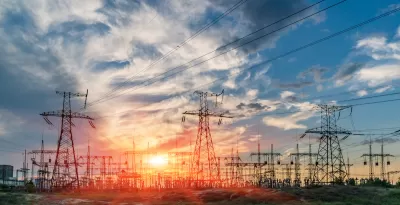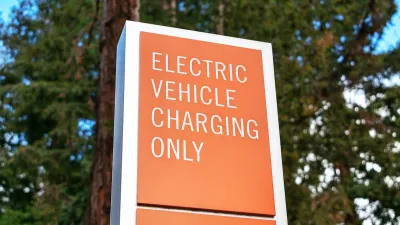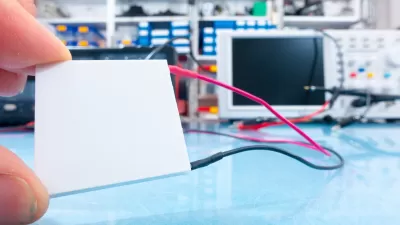Eliminating fossil fuels means shifting how electricity is produced and distributed from the source.

Writing in High Country News, Jonathan Thompson warns that the movement toward electrification will only improve sustainability if decarbonization reaches power generating plants as well. “The electric power sector is the nation’s second-largest emitter of greenhouse gases, after transportation. Electrifying everything might do little more than redistribute emissions from buildings and cars to the power grid.”
According to Thommpson, “The electric power sector needs to quit fossil fuels, cold turkey. And that requires massive investments in new power sources and innovation to remake the grid for a carbon-free world.”
Thompson goes on to highlight twelve methods for decarbonizing the grid, including eliminating coal and natural gas power plants, promoting efforts to build better batteries to store renewable energy, growing grid interconnections, and making buildings and vehicles more efficient so that they require less energy to begin with.
For example, ‘geographical smoothing’ can help states share and transmit excess energy. “This will require centralizing operations at what are now dozens of distinct power grids across the West—and building more long-distance transmission.” On the flip side, microgrids that are integrated but can also operate independently can stave off blackouts when disasters occur.
FULL STORY: 12 not-so-easy steps to decarbonize the grid

Planetizen Federal Action Tracker
A weekly monitor of how Trump’s orders and actions are impacting planners and planning in America.

Map: Where Senate Republicans Want to Sell Your Public Lands
For public land advocates, the Senate Republicans’ proposal to sell millions of acres of public land in the West is “the biggest fight of their careers.”

Restaurant Patios Were a Pandemic Win — Why Were They so Hard to Keep?
Social distancing requirements and changes in travel patterns prompted cities to pilot new uses for street and sidewalk space. Then it got complicated.

Platform Pilsner: Vancouver Transit Agency Releases... a Beer?
TransLink will receive a portion of every sale of the four-pack.

Toronto Weighs Cheaper Transit, Parking Hikes for Major Events
Special event rates would take effect during large festivals, sports games and concerts to ‘discourage driving, manage congestion and free up space for transit.”

Berlin to Consider Car-Free Zone Larger Than Manhattan
The area bound by the 22-mile Ringbahn would still allow 12 uses of a private automobile per year per person, and several other exemptions.
Urban Design for Planners 1: Software Tools
This six-course series explores essential urban design concepts using open source software and equips planners with the tools they need to participate fully in the urban design process.
Planning for Universal Design
Learn the tools for implementing Universal Design in planning regulations.
Heyer Gruel & Associates PA
JM Goldson LLC
Custer County Colorado
City of Camden Redevelopment Agency
City of Astoria
Transportation Research & Education Center (TREC) at Portland State University
Camden Redevelopment Agency
City of Claremont
Municipality of Princeton (NJ)





























